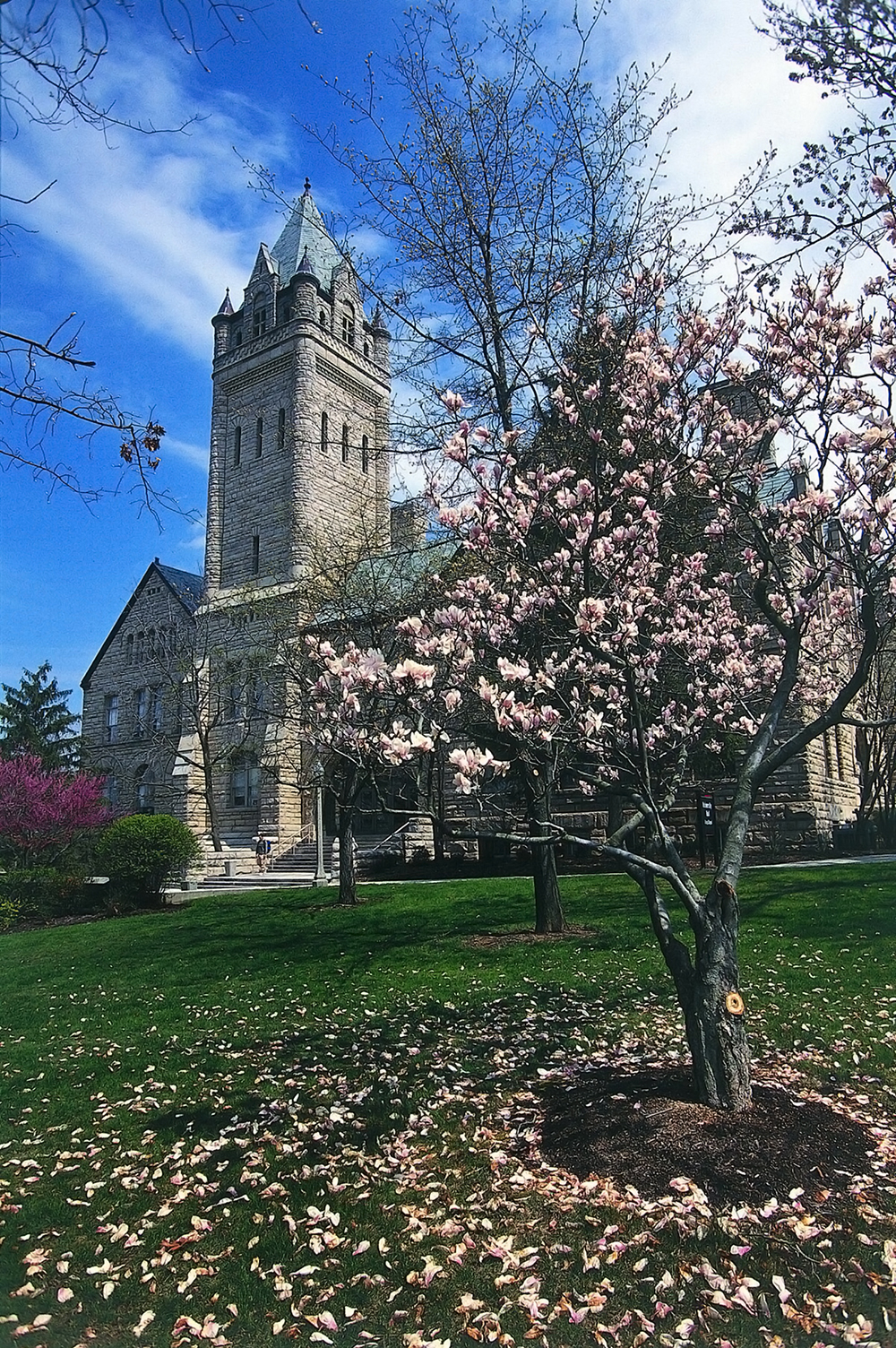
Professor proposes solutions to low enrollment, financial high water
By Professor Tom Wolber
Guest Columnist
On Census Day 2014, Ohio Wesleyan had 484 new students. The total enrollment for the fall semester was thus 1,734 students. That is a decline of 6.1 percent from the 1,829 who were enrolled at OWU on Census Day in the fall of 2013. Where do we go from here? Quo vadis, OWU?
Thesis
The discussion has barely started, but it is already clear that different people are drawing different conclusions from the unfortunate situation. In the first camp are primarily those to whom the financial health and well-being of the institution is entrusted. They are looking at the numbers and seem to have already concluded that it is belt-tightening time. To correct the imbalance of a 6.1 percent reduction in student size this year there should be a corresponding reduction of the faculty size next year.
A hiring freeze is already in place. If the current contraction trend continues beyond 2014-15, we could see courses, majors, faculty, and perhaps even entire programs, departments, and services either consolidated or dropped from the curriculum altogether. There are exigency policies in place that permit such contingencies, including the termination of tenured faculty members.
The ultimate authority for program and position reductions and terminations rests with the Board of Trustees. They have used the nuclear option in the past when OWU’s Department of Nursing or when tenure-track positions were eliminated in the 1980s and 1990s, respectively. In the eyes of some, the need of a balanced budget trumps all other concerns. In their minds, the question of cost-effectiveness and the resulting downsizing at a time when the demand for the company’s product is low is a sound and wise business decision.
There are, however, many problems with the implementation of draconian austerity measures. For one thing, to mindlessly subtract staff and faculty in a time of crisis can compromise the mission and quality of the institution. Also, austerity does not necessarily lead to growth and recovery. “You cannot cut your way to prosperity,” Ohio’s governor John Kasich stated in 2012. In addition, the decimation of personnel not only has devastating effects on employee morale but also on the reputation of an institution. A reduction in choices does not make OWU more attractive to prospective students and their parents.
Antithesis
In the other camp are those who advocate for revenue enhancement and a pro-growth agenda. At the first faculty meeting of the year, OWU’s new Vice President for Enrollment, Susan Dileno, spelled out several specific measures she launched to improve the admission situation. It seems premature to downsize the institution before she had a chance to test and implement all her ideas.
There are things OWU could and should be doing to turn the ship around: Let’s involve the faculty and the alumni, let’s make the curriculum more relevant and attractive, let’s consider three-year degree options, let’s create new majors and programs, let’s look at graduate-level degrees, let’s increase fundraising, let’s double the endowment, let’s explore on-line education and new markets, let’s create partnerships with community colleges, and let’s network and share resources with our GLCA sister institutions.
There is nothing inherently wrong with any of these suggestions. A good offense is the best defense, they say. The problem is that OWU has tried many of these ideas in the past, with mixed success. The truth is that institutions of higher learning, and especially liberal arts colleges, are facing a real crisis for which no silver bullet exists. Declining numbers of high-school graduates in the Midwest have something to do with it. At the same time, the economic recovery has yet to reach middle-class families; they continue to struggle economically.
Then there is the conservative push toward more practical, utilitarian, and vocational skills at the expense of a liberal-arts education. Suffice it to say that OWU is not the only college in Ohio and the Midwest that is facing challenges such as a declining student body and thus a budget shortage. Given these economic, demographic, and political realities, it will be tough to improve the situation. The future cannot be based on “hopium” alone. A sober assessment may eventually come to the conclusion that “rightsizing” the institution is indeed the best way to go. But at this specific point in time it is too early to make the definitive determination that a financially contingent situation exists.
Synthesis
Both “shrinkers” and “growers” have a point, but neither camp has all the answers. What is needed instead is a balanced approach combining expenditure reductions and revenue enhancements. This is what Ohio Wesleyan did in 1995 when it faced a similar situation under President Tom Courtice. There is no doubt that the budget imbalance that OWU is currently facing must be corrected, but there are several constructive ways to do so.
The president and the Board of Trustees indeed have a fiduciary obligation to keep OWU financially afloat. If they ignored budget considerations, they would be derelict in their duties. But the budget is only part of their mission.
There are also the conflicting goals of protecting the institution’s academic quality and heritage. Ignoring these equally important considerations would likewise constitute a serious breach of their responsibility. The trick is to find the right combination of mission, cost-effectiveness, and quality. Therefore, all options should be pursued aggressively, including the path of retrenchment and the path of growth. It is too early to commit to one particular strategy without having explored the full range of all available options first.
Should the institution eventually conclude that “rightsizing” the institution is indeed the way to go, it should follow the rules and regulations outlined in the “Faculty Handbook.”
It is imperative that the consultations are as wide as possible and the decision-making shared.
Standing faculty committees must be involved; hearings should take place as part of the deliberations; affected program and department chairs should be permitted to play an active role; and students should have a strong voice.
There are ways to handle exigency situations in a fair and transparent, rational and humane way. Perhaps natural attrition, early retirements, and buyouts can ease the pain. Laying off faculty and staff should be a measure of last resort and used only when all other efforts have failed.
